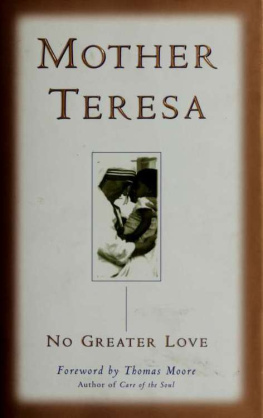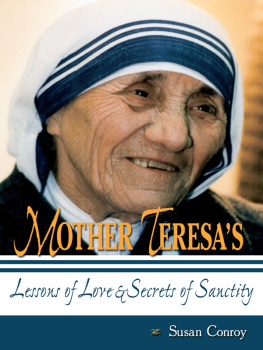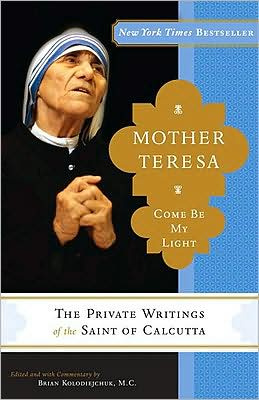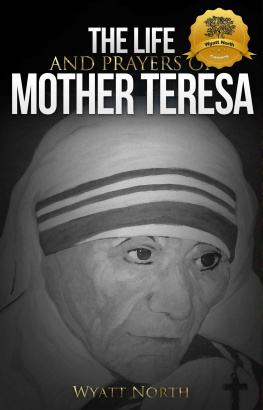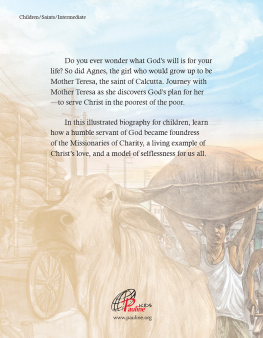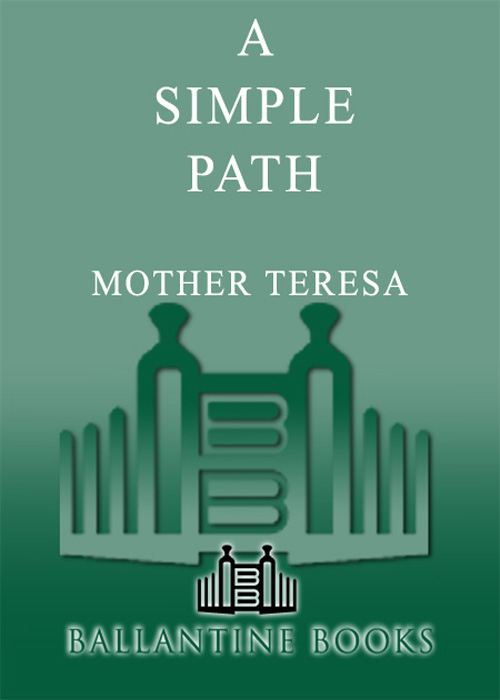
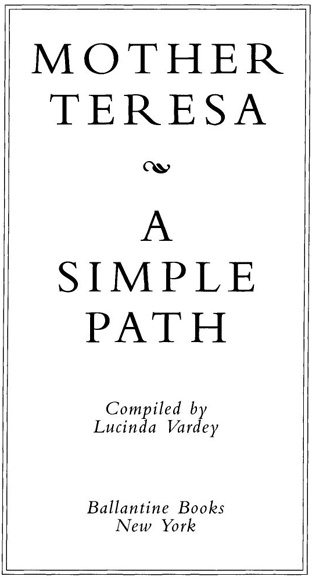
Table of Contents
HOW THIS BOOK CAME ABOUT

"I can tell you about my path," said Mother Teresa, "but Im only a little wireGod is the power. Talk to the others, the sisters and the brothers and the people who work with them. Some are not Christians, talk to them. You will know what it is when you see it. It is very beautiful. "
This book, A Simple Path, began several years ago when Omer Ahmed, a film producer colleague, arranged a meeting with Mother Teresa to discuss ideas for a book and film project. Although he has lived in London for forty-five years, Omer comes originally from India and his great-grandparents used to own land in the Tiljala and Motijheel districts of Calcutta. Tiljala is, today, on the other side of the railway track from Mother Teresas home for the mentally handicapped, and Motijheel is the area in which she started her first home. Omers family are Muslim but all of his sisters were educated at Loreto, where Mother Teresa taught in the thirties and forties. His family has long supported the work of the Missionaries of Charity.
We had become interested in exploring the extraordinary potency of Mother Teresa as a symbol of love in action. Her impact on the public imagination has been compared to the ripples a stone makes when it is thrown into a calm pool of water. For many non-Christians, Mother Teresa represents a form of Christianity they can wholeheartedly respect.
Yet although most of Mother Teresas biographical details are now well known, what is not widely understood is why she and the women and men of her order live in the way they doand whether, in this age of complication and confusion, she has anything relevant and accessible to say to those searching for a better way of life at the end of the twentieth century. By listening to what she said, seeing what she did, and why, could we learn more about how to really connect with the people around us? Could Mother Teresa and the Missionaries of Charity offer hope in what seemed like a difficult world?
It was with these, and many other, questions in mind that we came to be waiting at the Mother House of the Missionaries of Charity in Calcutta, one hot July day in 1994. As in all the houses of the Order around the world, the atmosphere was functional and very busy. Visitors were being dealt with politely but were not allowed to distract from the important work of helping the poorest of the poor.
At first, Mother Teresa was unsure at the prospect of yet another book. She said she doubted if any more words would bring anyone closer to understanding the meaning of her mission. It was all so simple, she said. Why should anyone need a guide to her simple path? All we, or anyone else, needed to do was to pray, and start loving one another more. First, we should become as familiar as possible with the work of the Missionaries of Charity by visiting Shishu Bhavan (the childrens home); Prem Nivas (the center for leprosy patients in Titagarh, run by the Missionaries of Charity brothers); Nirmal Hriday (the home for the dying and destitute); and Prem Dan (the home for TB sufferers and mentally handicapped patients).
We visited these, and other homes, several times, and the experience made us absolutely sure that a book which would help us learn how to pray, how to love more easily, how best to offer service to others, and so on was indeed needed. These questions could perhaps be dealt with readily by the Missionaries of Charity, but those of us in the West needed a series of clear and coherent steps to help us follow the path.
At this point the religious writer Lucinda Vardey was chosen to compile the book and joined us in further research. During the following months, we were offered more and more support with the project by Mother Teresa and her community and began by talking to Mother Teresa at great length on a wide range of subjects. We then discussed her approach and the work of the Missionaries of Charity with specific sisters and brothers in India and in the West, whom Mother introduced. Next, our search led us to individuals from many parts of the world who had volunteered in the Missionaries of Charity homesand we asked them to share their experiences and feelings about their work, too. Finally, Mother Teresa and her Order saw and approved the text and wished it well. The results are laid out in the succeeding pages.
JOHN CAIRNS, 1995
BEFORE READING ON

An Indian admirer of Mother Teresa, a business-man, once had five lines (shown on page I) printed for her on small yellow cards. These she calls her "business cards" and she offers them freely to people because they clearly explain the direction of her work, her simple path. This path is one that she has distilled from her long experience of working for the love of God with her fellow human beings. It is composed of six essential steps: silence, prayer, faith, love, service, and peace. Familiarity with one will naturally lead on to another. If one surrenders to the nature of the process, life will inevitably run more smoothly, more joyfully, and more peacefully.
Over the years, men and women have felt inspired to join Mother Teresa in her work. They have taken the vows of poverty, chastity, obedience, and wholehearted free service to the poorest of the poor and have undergone a long training to become senior members of the Missionaries of Charity. This Order was set up by Mother Teresa; its members have been trained by her and with her support. Thus, the work and attitudes of the nuns and monks who speak in this book are informed by Mother Teresas simple philosophy.
This catching force, fanning out in ever-increasing circles, can also be found in the experiences of the volunteers who have helped the Missionaries of Charity throughout the world. By working alongside the sisters and brothers, they too have absorbed Mother Teresas approach to life. They both live it and, in many cases, have recast it in the particular conditions of the West. Thus their testimonies are also valuable and inspiring.
By contemplating and practicing some of the many thoughts and suggestions in this book, we, too, can discover the benefits of the simple pathand we dont necessarily have to be Catholics, or specifically religious, to do so. There are numerous practical strategies in the following pages that we can try out for ourselves in our own communities. If we find silence or prayer unfamiliar and we are not sure if we believe in anything very much, then Mother Teresa suggests we try offering small acts of love to othersand we will find our hearts will open. The important thing is that, having read, we should do something, anything, and by that act of love we (and others) will be enriched.
THE SIMPLE PATH

The fruit of silence is
PRAYER.
The fruit of prayer is
FAITH.
The fruit of faith is
LOVE.
The fruit of love is
SERVICE.
The fruit of service is
PEACE.

INTRODUCTION

Next page


